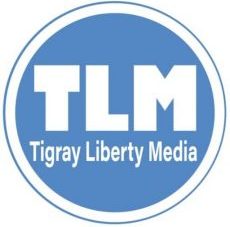[By Tekie Hagos]
Credit: Tigrai TV
The war launched against Tigray by the Ethiopian Federal Government, aided by the Eritrean army and extremist Amhara forces, was nothing short of genocidal in intent and execution. In its scope and brutality, marked by mass killings, widespread sexual violence, destruction of infrastructure, and calculated starvation, it aimed to erase not just a region but a people.
Amidst this darkness, the Tigray Defence Forces (TDF) emerged as the last line of defence. Composed of seasoned generals and tens of thousands of young volunteers, the TDF fought not for conquest, but for survival. Their resistance was a war of necessity, of moral clarity, and of national self-defence.
The People’s War
What made the TDF unique was not just their military discipline but the profound bond they shared with the people of Tigray. Every village became a logistics centre. Every household is a supply chain. Tigrayans, at home and abroad, gave everything: food, shelter, intelligence, money, and their own children. The diaspora played a vital role, mobilising global support under siege conditions and relentlessly raising the alarm in international forums.
This unprecedented unity between fighters and civilians, between Tigray and the diaspora, ultimately shifted the balance of power. Despite overwhelming odds and the silence of much of the world, Tigray forced the federal government to the negotiating table. It was the strength of this unity that led to the Pretoria Peace Agreement, a moment that promised the beginning of healing, return, and reconstruction.
Post-War Setbacks: Political Missteps and the Erosion of Trust
However, in the post-war landscape, new challenges have surfaced. Hopes for peace and recovery have been dimmed by internal fractures, especially the increasing politicisation of the TDF command. Once celebrated as the embodiment of people’s resistance, segments of the military leadership have begun aligning themselves with the TPLF’s political survival tactics, creating growing tension with the population that once revered them.
One of the most glaring manifestations of this tension came with the dismantling of zonal leadership structures, particularly in Southern Tigray and Raya. The sudden removal of popular Zonal Administrator Haftu Kiros, without community consultation, shocked and angered many. It was perceived not only as political overreach but also as a betrayal of the very people whose sacrifice fuelled the resistance.
Raya Rises: A Turning Point in Civic Resistance
Yet in the face of this political overstep, the people of Raya responded not with violence, but with principled defiance. In an extraordinary act of peaceful civic resistance, elders, youth, women’s associations, civil society, and religious leaders stood together in unity. They demanded transparency, dignity, and the reinstatement of the legitimate administration they had chosen.
Their Message Was Simple: Governance must be by consent and not by imposition.
In a historic and symbolic moment, General Tadesse Werede, head of the Interim Administration, bowed to the will of the people and reinstated Haftu Kiros and his cabinet. This was not merely an administrative correction; it was a reaffirmation of the democratic spirit that still burns in the hearts of the Tigrayan people.
The Way Forward: Realigning with the People’s Cause
This recent civic victory in Raya underscores the need for the TDF and all governing institutions to return to the values that made the resistance noble. The people’s demands remain consistent and just:
- The full return of IDPs to their homes in Western and Southern Tigray
- Restoration of Tigray’s territorial integrity
- Transparent, people-centred governance
- Accountability for war crimes and internal injustices
- The rebuilding of institutions rooted in justice and equity
The diaspora continues to be a vital actor in this ongoing journey. Their support—financial, diplomatic, and moral—remains indispensable. In the case of Raya, it was pressure from both internal and external actors that helped tip the scales in favour of justice.
Conclusion: Tigray’s Future is Still in the People’s Hands
The war did not break the Tigrayan people. If anything, it revealed their strength. But the post-war political missteps have reminded us all that the struggle is not over. The recent reinstatement of Haftu Kiros in Raya is a milestone in the reassertion of people’s sovereignty over political manoeuvring. It is a testament to what can be achieved when civic resistance is grounded in unity, dignity, and principle.
The hope for Tigray’s future rests in this balance between the bravery of its fighters, the wisdom of its people, and the accountability of its leaders. If the TDF realigns with the people, and the diaspora continues to uphold their historic role, Tigray will not only survive, but it will rise again, stronger, united, and more determined than ever to shape its own destiny.
The struggle for democracy, freedom, and liberty led by the people for the people—let it be the legacy of Tigray’s resistance.

Great article and factual about what is happening in Tigray. The people of Tigray must say no to TPLF and end its reign for good. The people of Tigray have choices and give an opportunity to the opposition parties.
The TPLF is destroying itself by its visionless, corrupt, inept, and human rights-abusing leadership. The people of Tigray have opposed the TPLF alliance (ፅምዶ), but it is ignoring the people’s voice. The TPLF is now officially divorced from the people, and its political life is hanging by a thread.